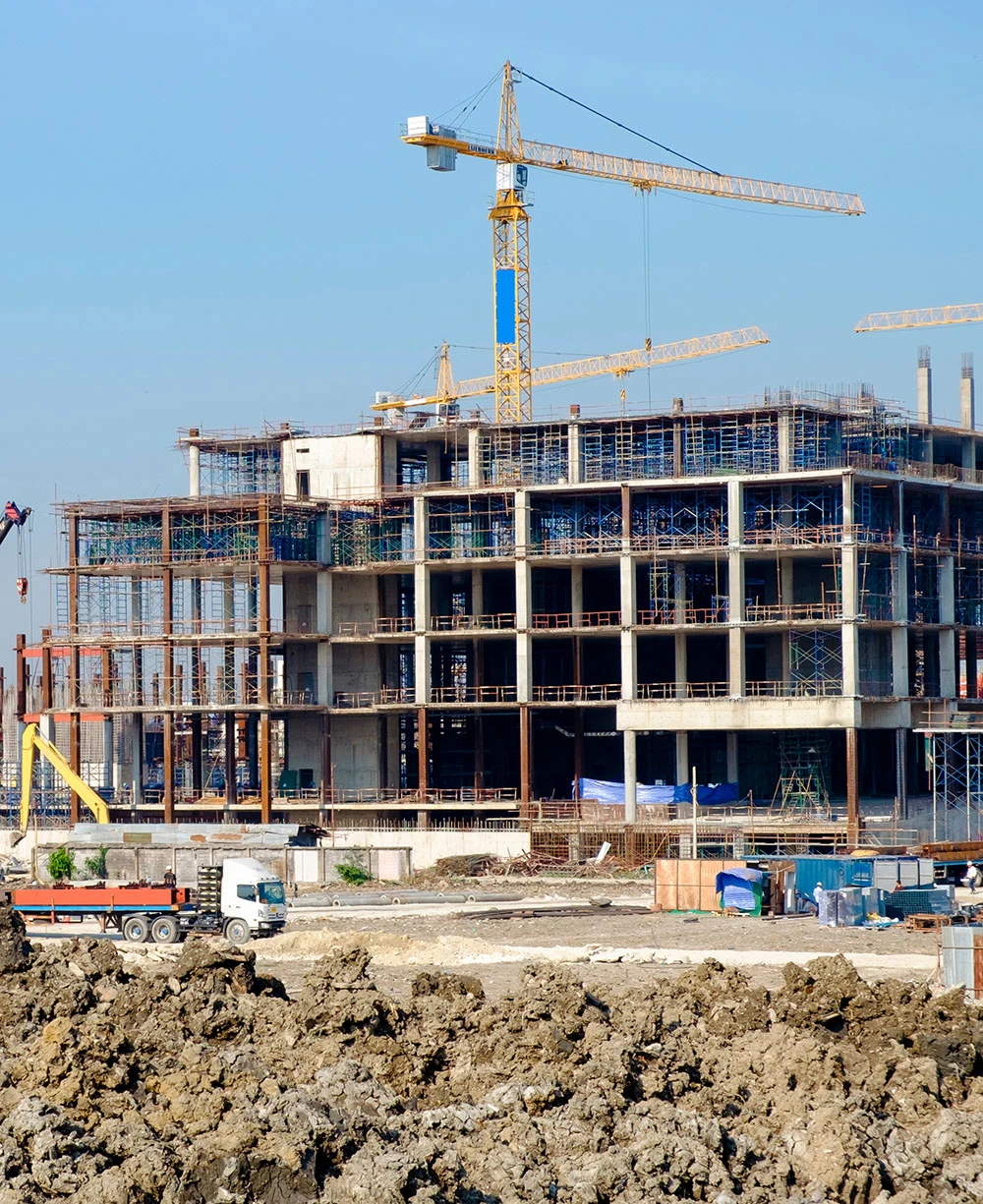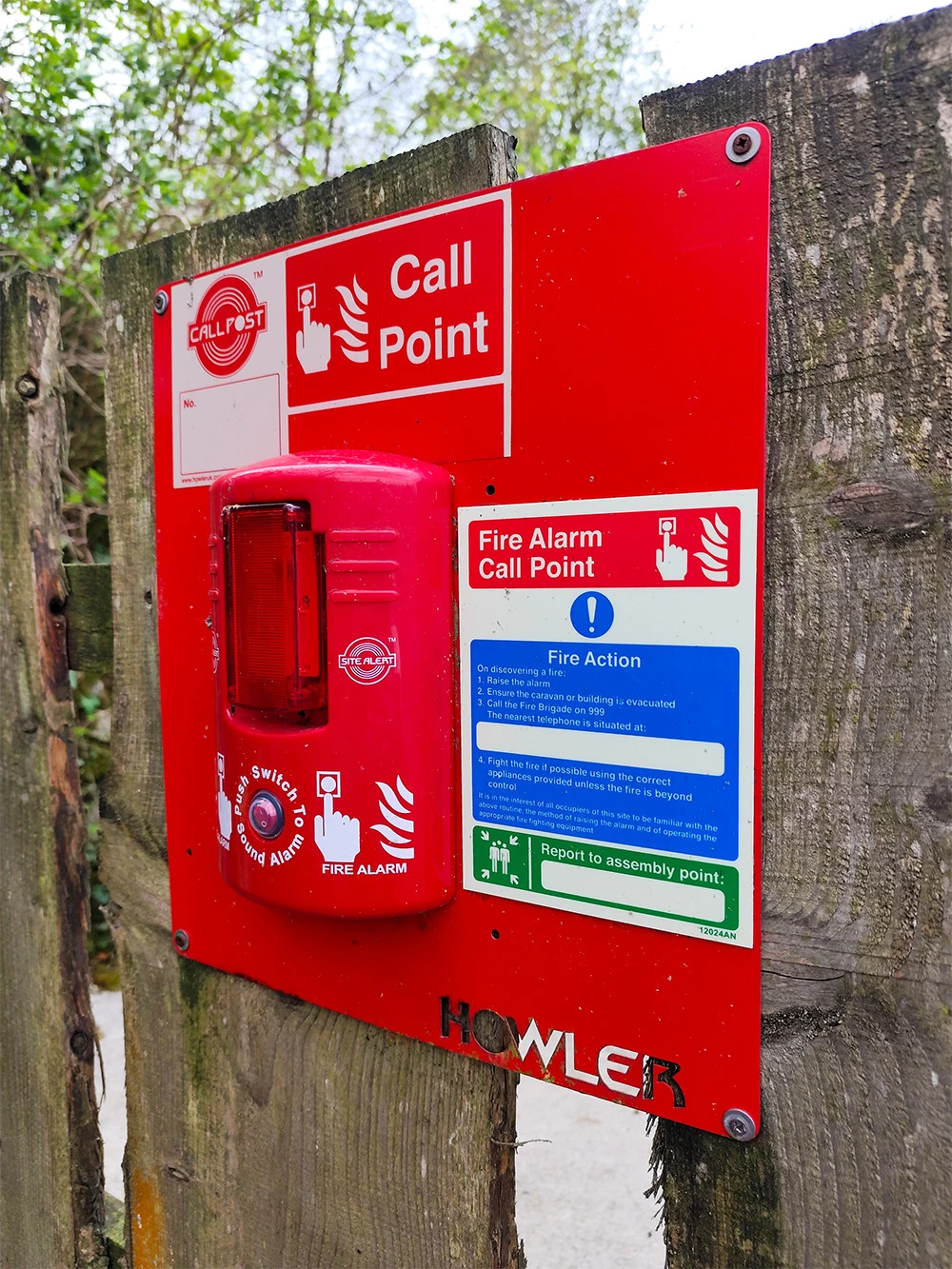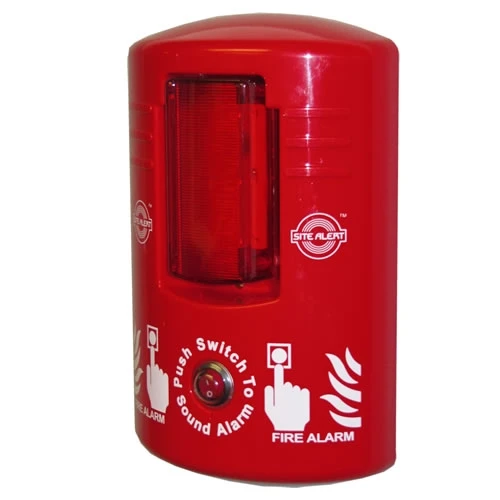
Need assistance?
Need Assistance? Call Us 0330 058 0630
Did You Know? We Sell Fire Alarm Systems as Complete Kits. Shop Now
23/04/2025 • by Alice P

Ensuring reliable construction site fire safety can be challenging. Temporary structures and construction sites may be built on remote locations, they may require continuous operations throughout the night and will vary in size depending on the scale of the project.
These factors all require tailored fire safety solutions. Fortunately, temporary fire alarm systems are specially designed to withstand these demanding conditions.
Understanding temporary fire alarm systems is crucial for protecting construction sites, temporary structures and the workers who operate within them. But where should you start? At Fire Detection Shop, our team of safety experts is here to help.
This guide will explain how temporary fire alarms work, which industries benefit from them, the advantages of interlinked fire alarms and the differences between wired and wireless site alarm solutions.
Temporary fire alarm systems are portable safety solutions for construction sites and other temporary locations, such as campsites and festivals.
While construction site alarms operate similarly to standard fire alarms, continuously monitoring areas for rising smoke particles, which will trigger the alarm and alert others when a fire threat is detected, they communicate between different devices differently. Instead of using wired connections, many wireless temporary fire alarm systems communicate via radio signals.
Traditional fire alarm systems have the luxury of being installed into an infrastructure once and only replaced when needed. However, wiring fire alarm systems into building sites is typically very difficult. Alongside this, construction sites are fast-paced environments that require equipment to adapt to these conditions constantly. Construction site temporary fire alarms are portable devices designed to be highly durable.

Temporary fire alarm systems primarily benefit construction sites. However, investing in site alarm kits can also benefit:
Temporary structures
Campsites
Renovation projects
Entertainment venues
Industrial settings
Pop-up stores
Construction sites are high-risk environments where fire safety equipment must endure harsh weather conditions, dust, and impact. Building sites are also areas where hot machinery is used alongside flammable materials, liquids, gases and metals.
While some construction sites may be operated overnight, others will be left unattended in remote locations. If a fire does start, it can engulf the entire construction site before spreading to the surrounding area. These factors all increase the risk of fires suddenly igniting and spreading rapidly.
A construction site fire not only creates a direct risk for the workers and the property but also to the surrounding environment and people. This is why fire safety in construction is crucial to protecting people and property.

Interlinked temporary fire alarm systems enhance fire safety. Making them ideal for larger construction sites. By connecting your fire alarms, you can create a safer network of fire protection.
Interlinking connects multiple fire alarm devices within a circuit. If one device is triggered, it activates all the connected alarms. This increases the scope of the fire warning. It is also possible to interlink both wired and wireless construction site alarms.
Interlinking wired fire alarm systems is achieved via cable, while linking together wireless fire alarms is done by connecting radio-frequency signals.
While interlinking improves fire safety, you must also consider the specific fire safety needs of your space. For example, smaller construction sites may only require individual portable fire alarms instead of an interlinked system.
Hard-wired interlinking can also increase installation costs (for larger construction sites, the increased fire protection may justify this expense). Ultimately, interlinking is a tool that creates more efficient fire safety. If you’re unsure which system to choose, our fire safety experts are always available to answer any queries.
Similarly, conducting a construction site Fire Risk Assessment will create a clearer guide of the legal requirements you must follow for fire safety.
There are two main types of temporary fire alarm systems: wired and wireless.
While both alarm systems are effective fire safety solutions, understanding the difference between the two types allows you to tailor your fire safety equipment to match the environment.
Also known as wired construction site alarms, these hardwired devices ensure continuous fire protection without relying on radio signals or battery life. Wired fire alarms are ideal for sites with mains power access and offer unique benefits.
Highly Durable: Wired site fire alarms are more resistant to dust, weather and moisture. Unlike wireless alarm systems, where these factors may interfere with the wireless signal, a wired fire alarm system can continue to work regardless of exterior conditions.
Reduces False Alarms: Hard-wired fire alarms are tamper-proof and do not rely on radio signals. This ensures more accurate fire detection.
Reliably Powered: Battery life can seriously impact the quality of your fire safety and, without enough warning, can cause your fire safety equipment to fail when you need it the most. Wired fire alarms are powered via the mains, allowing them not to depend on a battery.

Also known as wireless construction site alarms, these devices deliver dependable fire detection and emergency alerts without requiring intricate wiring.
Construction sites are often built in remote locations away from mains power. This means site fire alarms must operate without being connected to the mains. Wireless temporary fire alarms can be battery-powered or connected via radio frequency, ensuring the reliability of fire protection regardless of location. But what are the specific benefits of wireless temporary fire alarm systems?
1. Simple Installation: As the name suggests, wireless temporary fire alarms do not require intensive wiring. This significantly cuts down on installation costs and reduces the time needed to set up. The easy installation also ensures minimal disruption, providing workers with fire protection quickly without disruption to workflow.
2. Flexibility: Portable fire alarms allow workers to tailor their fire safety to the construction site’s specific needs. Regardless of the temporary building site’s scale, wireless fire alarm systems can easily adapt, easily increasing the scope of fire protection through radio signals.
3. Long-lasting Battery Life: Fire safety equipment that relies on mains power can limit where the equipment may be used. Luckily, wireless temporary fire alarms are fitted with batteries.
4. Reliability: Wireless fire alarms remove the stress of a faulty battery life. At Fire Detection Shop, our range of wireless temporary fire alarms comes with a battery low indicator. This prevents the alarm battery from going flat unnoticed or for the alarm’s features to falter when you need them the most.
5. Portable: Wireless fire alarm systems give you the freedom and flexibility to install portable fire alarms, sounders and control points. A portable fire alarm system allows you to keep up with rapidly changing construction sites.

Temporary fire alarm systems combine flexibility with durability to provide essential fire protection for construction sites and other temporary environments.
Whether you choose a wired or wireless system, understanding the benefits and limitations of each can help you make an informed decision. Interlinked fire alarms further enhance safety, making them a valuable investment for larger sites.
If you need assistance selecting or installing a temporary fire alarm system, our team at Fire Detection Shop are always available to offer guidance and support.